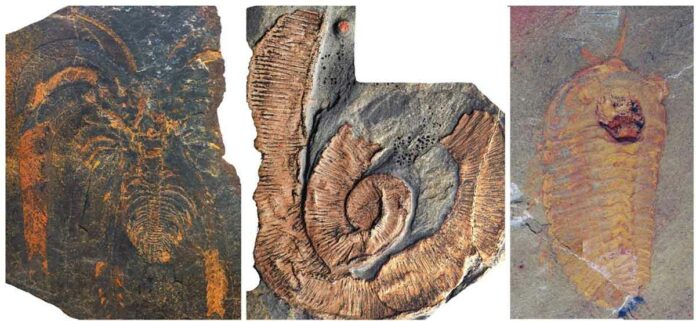Scientists made a new discovery at a major new fossil site in Morocco. This discovery indicates that, giant arthropods who are the relatives of modern creatures such as shrimp, insects, and spiders, ruled the seas.
Early evidence from Taichoute (once undersea but is now a desert) shows a plethora of large “free-swimming” arthropods.
More research is needed to examine these fragments. But based on previously described specimens, the giant arthropods could reach lengths of up to 2m.
The site and its fossil record are very different from other previously described and studied at Fezouata Shale sites located 80 kilometres away.
Taichoute (part of the larger “Fezouata Biota”) is said to open up new avenues for paleontological and ecological research.
The Fezouata Shale was recently named one of the world’s 100 most important geological sites. Because this site has its own significance in understanding evolution during the Early Ordovician period. The Ordovician period happened approximately 470 million years ago.
Mineralised elements (such as shells) have been discovered in these rocks. But some show exceptional preservation of soft parts such as internal organs. It allowed scientists to investigate the anatomy of early animal life on Earth.
Animals in Morocco’s Zagora region lived in a shallow sea. They were subjected to repeated storm and wave activity. This buried the animal communities and preserved them as exceptional fossils.
Nektonic or free-swimming animals continue to be a minor component of the Fezouata Biota.
The Taichoute fossils were discovered in sediments of the sea. It revealed that they were a few million years younger than those from the Zagora area. They were also dominated by fragments of giant arthropods.
“Animals such as brachiopods are found attached to some arthropod fragments. It indicates that these large carapaces acted as nutrient stores for the seafloor dwelling community once they were dead and lying on the seafloor,” said Professor Allison Daley of the University of Lausanne.
Dr. Bertrand Lefebvre, senior author of the paper and researcher on the Fezouata Biota for the past two decades, concluded, “The Fezouata Biota continues to surprise us with new unexpected discoveries.”
The paper named “New fossil assemblages from the Early Ordovician Fezouata Biota” was published in the journal Scientific Reports.
More information: New fossil assemblages from the Early Ordovician Fezouata Biota, Scientific Reports (2022). DOI: 10.1038/s41598-022-25000-z

